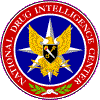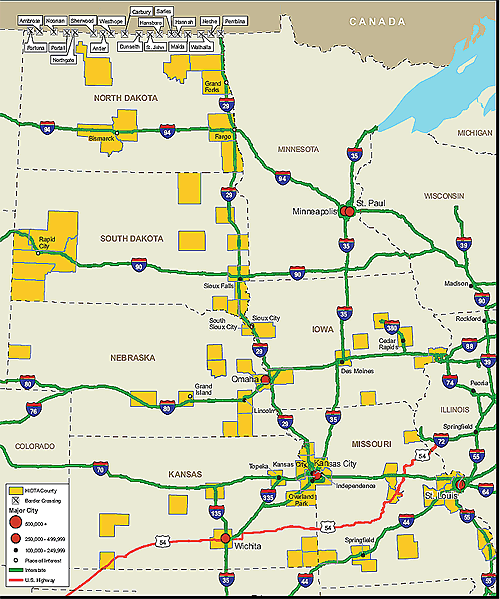
|
National
Drug Intelligence Center Midwest High Intensity Drug Trafficking Area Drug Market Analysis May 2007 ProductionIllicit drug production in the Midwest HIDTA generally entails methamphetamine production, crack cocaine conversion, and cannabis cultivation. Caucasian criminal groups and independent manufacturers are the primary producers of methamphetamine and marijuana, while African American criminal groups and street gangs dominate crack cocaine conversion. Legislation controlling the sale of pseudoephedrine and other methamphetamine precursor chemicals as well as law enforcement and public awareness programs has reduced the number of clandestine laboratories operating in the HIDTA region. State precursor control laws have limited access to pseudoephedrine in Iowa, Kansas, and Missouri by listing it as a Schedule V controlled substance. Additionally, some HIDTA states have enacted quantity restrictions, storage restrictions, and requirements for pharmacies to maintain logbooks of pseudoephedrine purchases (see Table 2 in Outlook section). Aggregate methamphetamine laboratory seizures in the Midwest HIDTA states decreased 72 percent between 2004 and 2006, from 5,344 seizures to 1,485 seizures.5 (See Figure 5 in Outlook section) Moreover, law enforcement programs and public awareness campaigns have alerted an increasing number of citizens about the impact that clandestine methamphetamine laboratories have on emergency responders, children, and the environment; this has resulted in an increased number of tips to law enforcement as to laboratory activity and a corresponding decrease in methamphetamine production. Although precursor control legislation has reduced methamphetamine producers' access to precursor chemicals, weaknesses exist in the laws. None of the Midwest HIDTA states have a centralized database for pharmacies to record sales of precursors such as pseudoephedrine. Instead, each pharmacy maintains its own independent logbook that must be manually compared to the logbooks of thousands of other pharmacies in the area. For example, in Kansas, law enforcement officials must visit each pharmacy and manually gather logbook information--a time-intensive practice. Methamphetamine producers exploit this systematic weakness by making multiple purchases of pseudoephedrine at or below the legal limit from various locations, sometimes within numerous jurisdictions (a practice known as smurfing). Laboratory operators in these locations often make "pill runs" into neighboring states to purchase large amounts of precursor chemicals and return to Missouri to produce the drug.
While domestic methamphetamine production has decreased in the Midwest HIDTA, clandestine production continues to represent a threat. Law enforcement agencies seized more clandestine methamphetamine laboratories in Missouri than in any other state in 2006, with 1,030 reported laboratory seizures. Most methamphetamine laboratories seized in Missouri were discovered in the state's southwestern counties and in the St. Louis metropolitan area. Powder cocaine is frequently converted to crack cocaine and cannabis is grown in the HIDTA region. African American criminal groups and street gangs in metropolitan areas such as Kansas City, Omaha, St. Louis, Sioux Falls, Springfield, Topeka, and Wichita are the primary converters of powder cocaine into crack. These groups often obtain powder cocaine from Mexican sources and then convert it into crack for local distribution. Limited cannabis cultivation occurs throughout the Midwest HIDTA at both indoor and outdoor locations. Caucasian independent distributors are the primary growers of cannabis in the HIDTA region. However, most of the marijuana available in the HIDTA is produced in Mexico. TransportationThe Midwest HIDTA region is a significant transshipment center because of its geographic location in the central United States and its highly developed interstate highway infrastructure. Major interstates that traverse the region include Interstates 29, 35, 44, 55, 70, 80, 90, and 94. (See Figure 2.) These highways are routinely utilized by traffickers to ship methamphetamine, cocaine, marijuana, heroin, and other illicit drugs from the Southwest and Northern Borders6 to Midwest HIDTA markets and through the HIDTA to Great Lakes and Northeast Region markets such as Chicago and New York. For instance, law enforcement officials made two sizable seizures of white heroin in July and September 2006 that were destined for markets in the northeastern United States. In July officials seized 5.3 kilograms of white heroin during a traffic stop near Junction City, Kansas. In September 8.5 kilograms of white heroin were seized from a commercial bus passenger at the Kansas City, Kansas, bus terminal.7
Figure 2. Midwest HIDTA region
transportation infrastructure. Mexican DTOs and criminal groups transport most of the ice methamphetamine, cocaine, marijuana, and Mexican black tar and brown powder heroin available in the HIDTA region. These organizations primarily use commercial and private vehicles with increasingly sophisticated hidden compartments to transport these drugs into the area. Mexican DTOs frequently recruit Mexican immigrants living in the region, with no ties to the organization, to transport illicit drugs from the Southwest Border to the HIDTA region. DTO leaders thereby insulate themselves from law enforcement detection if the shipment is stopped, since the drivers do not know who owns the drug shipment. Some Mexican DTOs also attempt to recruit middle-aged or elderly Caucasian and Hispanic females as couriers, since DTO leaders reportedly believe that law enforcement will be less suspicious of these people. Traffickers predominantly transport illicit drug shipments into the HIDTA region in private and commercial vehicles. Highway seizures indicate that most illicit drug shipments destined for the region originate in Arizona, California, Texas, or other Southwest Region areas. Common source cities identified by Kansas Highway Patrol and Missouri Highway Patrol interdiction efforts include Phoenix and Tucson, Arizona; Los Angeles and San Diego, California; and El Paso, Texas. Shipment size varies, but typical loads of Mexican methamphetamine bound for Kansas City, Kansas, range from 5 to 20 pounds per car. African American, Asian, and Caucasian street gangs, criminal groups, and independent dealers transport powder and crack cocaine, Mexican marijuana, and PCP (phencyclidine) to the area, but less frequently than in the past. It is generally easier and safer for these traffickers to purchase illicit drugs from Mexican wholesalers and other traffickers in the Kansas City metropolitan area, Wichita, and other Midwest HIDTA market areas. African American street gang members based in Chicago, Detroit, and Minneapolis also transport crack, powder cocaine, and marijuana to metropolitan areas in Iowa, South Dakota, Nebraska, and North Dakota. Asian trafficking groups transport MDMA and Canadian marijuana into and through the HIDTA region. Federal and county officials in Wichita report that Vietnamese traffickers with sources in Texas and Washington State are smuggling wholesale quantities of MDMA into Wichita. Additionally, Caucasian trafficking groups transport Mexican and Canadian marijuana, Mexican methamphetamine, and limited quantities of MDMA to the area. End Notes5. These data
include all methamphetamine laboratories, dumpsites, and chemicals,
glassware, and equipment seized by federal, state, and local authorities
and reported to the Drug Enforcement Administration (DEA) El Paso Intelligence
Center (EPIC). |
